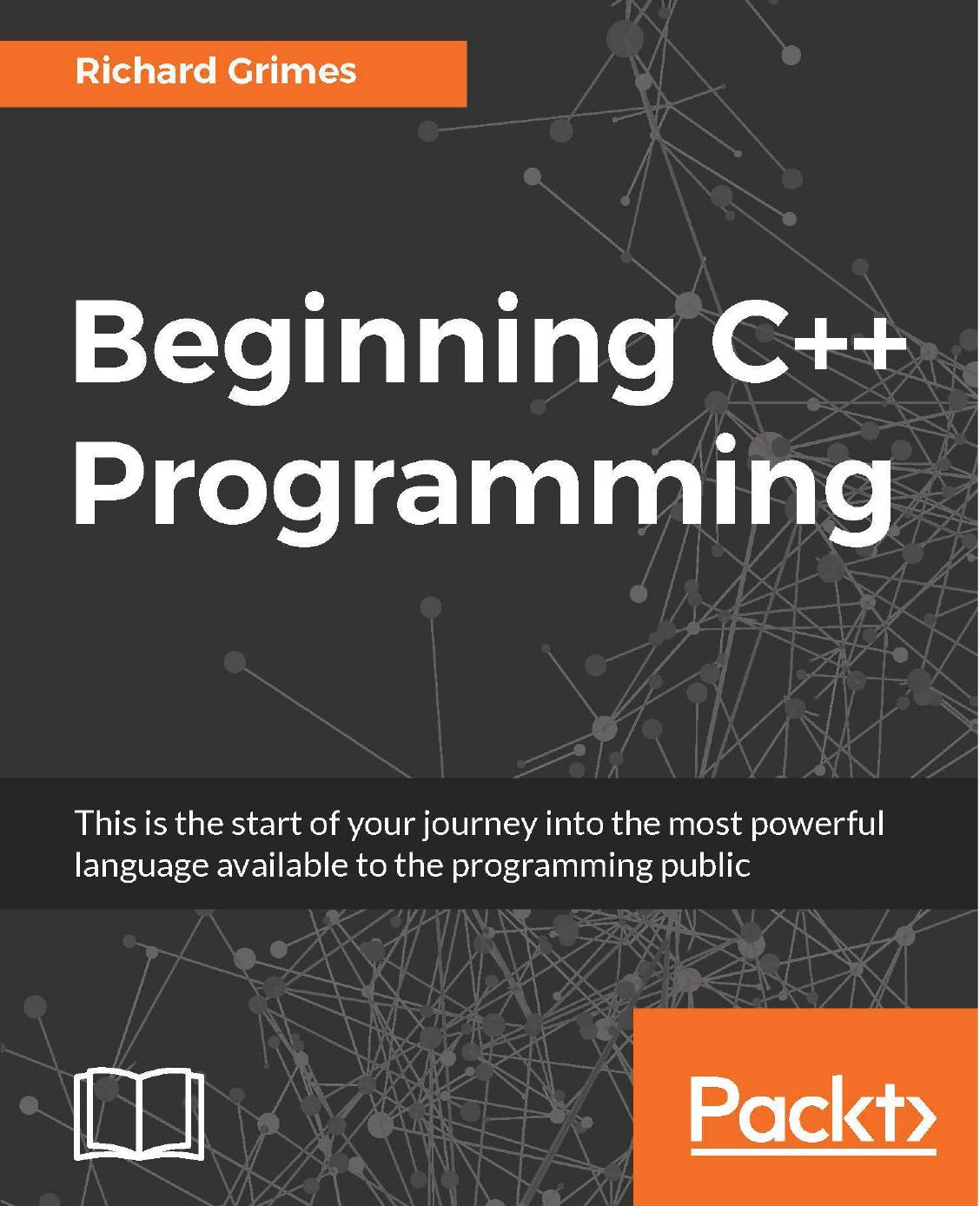Beginning C++ Programming by Richard Grimes

Author:Richard Grimes
Language: eng
Format: epub, azw3, mobi, pdf
Publisher: Packt Publishing
Published: 2017-04-21T12:53:53+00:00
Defining classes
A class is defined in a statement, and it will define its members in a block with multiple statements enclosed by braces {}. As it's a statement, you have to place a semicolon after the last brace. A class can be defined in a header file (as are many of the C++ Standard Library classes), but you have to take steps to ensure that such files are included only once in a source file. Chapter 1, Starting with C++, describes how to do this with #pragma once, conditional compilation, and precompiled header files. There are, however, some rules about specific items in a class that must be defined in a source file, which will be covered later.
If you peruse the C++ Standard Library, you will see that classes contain member functions and, in an attempt to put all the code for a class into a single header file, this makes the code difficult to read and difficult to understand. This may be justifiable for a library file maintained by a legion of expert C++ programmers, but for your own projects readability should be a key design goal. For this reason, a C++ class can be declared in a C++ header file, including its member functions, and the actual implementation of the functions can be placed in a source file. This makes the header files easier to maintain and more reusable.
Download
Beginning C++ Programming by Richard Grimes.azw3
Beginning C++ Programming by Richard Grimes.mobi
Beginning C++ Programming by Richard Grimes.pdf
This site does not store any files on its server. We only index and link to content provided by other sites. Please contact the content providers to delete copyright contents if any and email us, we'll remove relevant links or contents immediately.
The Mikado Method by Ola Ellnestam Daniel Brolund(20667)
Hello! Python by Anthony Briggs(19959)
Secrets of the JavaScript Ninja by John Resig Bear Bibeault(18275)
The Well-Grounded Java Developer by Benjamin J. Evans Martijn Verburg(17636)
OCA Java SE 8 Programmer I Certification Guide by Mala Gupta(17466)
Kotlin in Action by Dmitry Jemerov(17250)
Algorithms of the Intelligent Web by Haralambos Marmanis;Dmitry Babenko(16280)
Grails in Action by Glen Smith Peter Ledbrook(15436)
Sass and Compass in Action by Wynn Netherland Nathan Weizenbaum Chris Eppstein Brandon Mathis(13293)
Test-Driven iOS Development with Swift 4 by Dominik Hauser(10406)
Windows APT Warfare by Sheng-Hao Ma(7833)
Layered Design for Ruby on Rails Applications by Vladimir Dementyev(7549)
Blueprints Visual Scripting for Unreal Engine 5 - Third Edition by Marcos Romero & Brenden Sewell(7451)
Solidity Programming Essentials by Ritesh Modi(4568)
Functional Programming in JavaScript by Mantyla Dan(4441)
Hands-On Full-Stack Web Development with GraphQL and React by Sebastian Grebe(4431)
WordPress Plugin Development Cookbook by Yannick Lefebvre(4386)
Unity 3D Game Development by Anthony Davis & Travis Baptiste & Russell Craig & Ryan Stunkel(4270)
The Ultimate iOS Interview Playbook by Avi Tsadok(4252)
